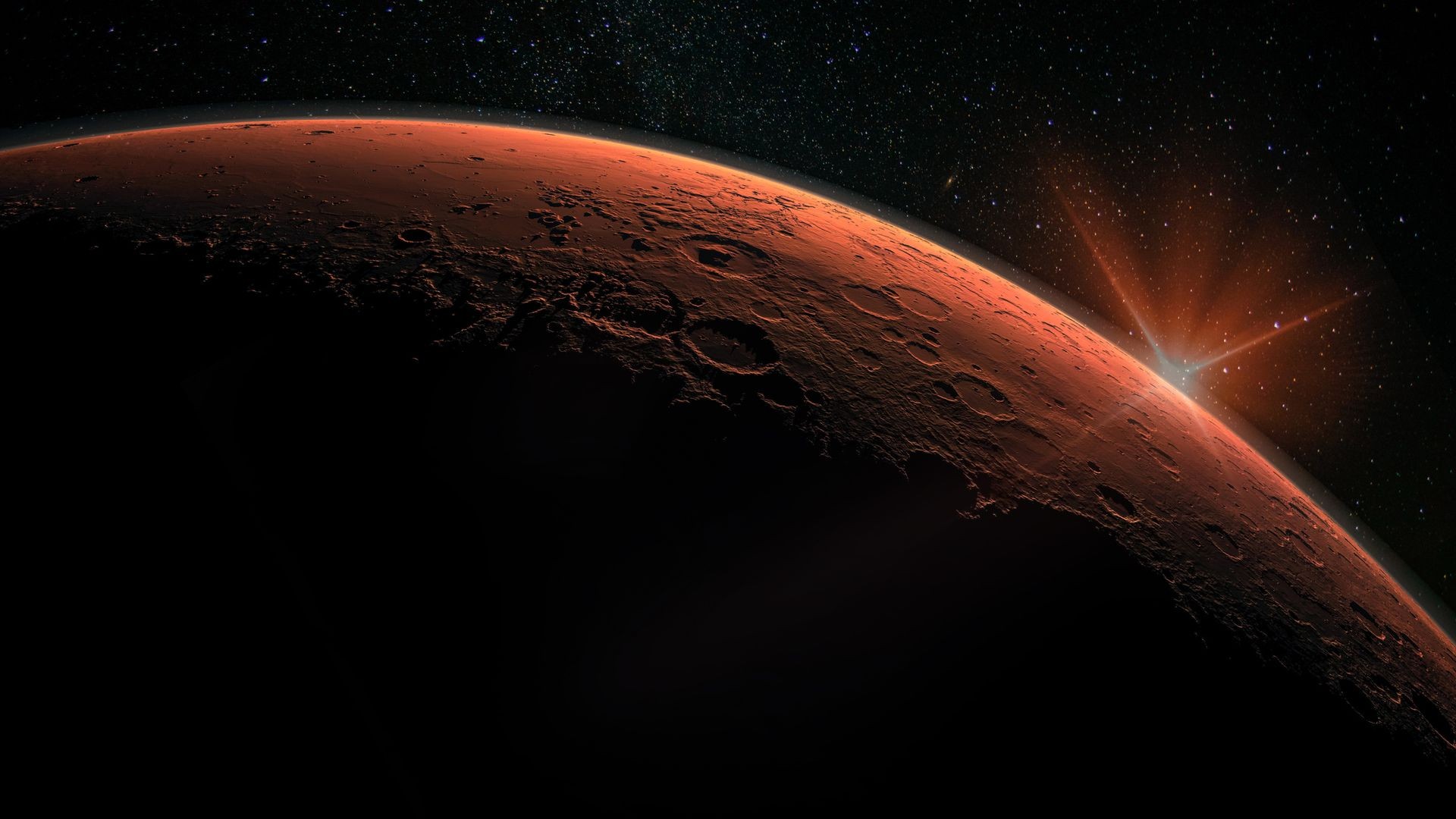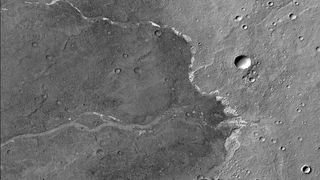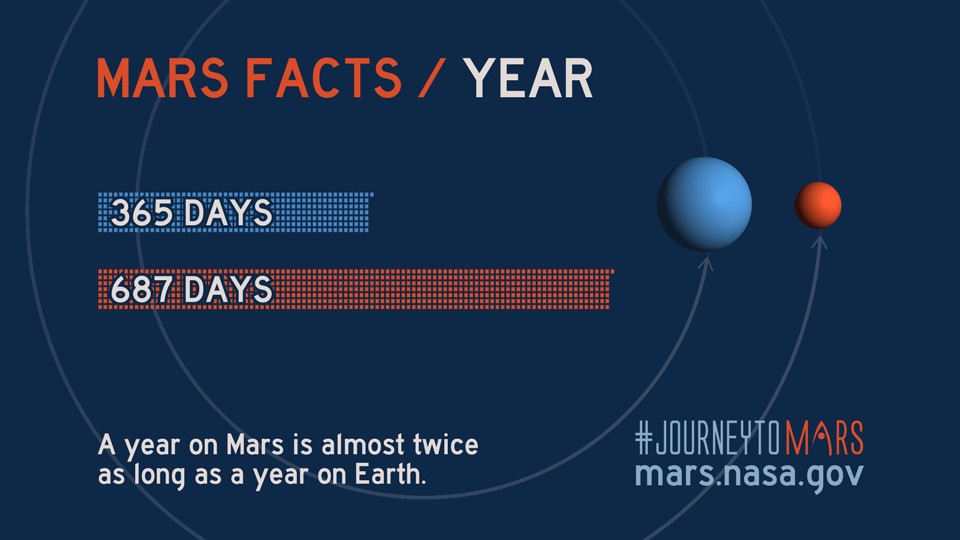What Is The Atmospheric Pressure On Mars Compared To Earth? The Martian atmosphere, primarily composed of carbon dioxide, nitrogen, and argon, is significantly thinner than Earth’s, posing unique challenges and opportunities for future exploration. COMPARE.EDU.VN provides a comprehensive comparison, offering insights into the atmospheric differences and the implications for human settlement and scientific research, exploring Martian air density, barometric pressure, and space exploration technology.
1. Introduction: Unveiling the Atmospheric Disparities Between Mars and Earth
The allure of Mars has captivated scientists and space enthusiasts alike for decades. As we venture closer to the possibility of human colonization, understanding the fundamental differences between the Red Planet and our own becomes paramount. One of the most significant distinctions lies in their atmospheres. Mars possesses an atmosphere that is dramatically thinner and compositionally distinct from Earth’s. This article delves into the specifics of “what is the atmospheric pressure on Mars compared to Earth?”, exploring the intricacies of the Martian atmosphere, its composition, weather patterns, and the challenges and opportunities it presents for future exploration. For detailed comparisons and expert analysis, visit COMPARE.EDU.VN, your go-to source for informed decision-making.
2. Martian Atmosphere: A Thin Veil of Carbon Dioxide
Unlike Earth’s nitrogen- and oxygen-rich atmosphere, Mars’ atmosphere is primarily composed of carbon dioxide (CO2). According to NASA, it’s over 100 times thinner than Earth’s. Oxidized dust particles kicked up from the Martian surface fill the atmosphere turning Mars’ skies a rusty tan color. This thinness has profound implications for temperature regulation, radiation exposure, and the potential for liquid water to exist on the surface.
Alt text: Artistic rendering depicting the thin Martian atmosphere above its rusty red surface.
2.1 Composition of the Martian Atmosphere
Mars’ atmosphere comprises:
- 95.32% Carbon Dioxide (CO2)
- 2.7% Nitrogen (N2)
- 1.6% Argon (Ar)
- 0.13% Oxygen (O2)
- Trace amounts of other gases
The dominance of carbon dioxide creates a unique environmental challenge, as humans cannot breathe Martian air directly. However, it also presents an opportunity for in-situ resource utilization (ISRU), such as converting CO2 into breathable oxygen, a technology being pioneered by NASA’s Perseverance rover.
2.2 Atmospheric Pressure on Mars vs. Earth
The atmospheric pressure at the surface of Mars averages around 6.35 millibars (mbar). In contrast, Earth’s average sea-level pressure is approximately 1013.25 mbar. This means that the atmospheric pressure on Mars is only about 0.6% of Earth’s. To put this in perspective, the atmospheric pressure on Mars is similar to that found at an altitude of about 35 kilometers (22 miles) above Earth’s surface.
2.3 Implications of Low Atmospheric Pressure
The low atmospheric pressure on Mars has several significant consequences:
- Liquid Water Instability: Water cannot exist in a stable liquid state on the Martian surface under current conditions. It either boils away (sublimates) or freezes.
- Extreme Temperature Variations: The thin atmosphere provides minimal insulation, leading to extreme temperature swings between day and night.
- Radiation Exposure: With a thinner atmosphere and no global magnetic field, the Martian surface is exposed to much higher levels of radiation from the sun and cosmic sources than Earth.
- Challenges for Human Exploration: Astronauts would require pressurized suits or habitats to survive on Mars.
3. Martian Climate and Weather: A Dynamic but Harsh Environment
Despite its thin atmosphere, Mars exhibits a dynamic climate and extreme weather events. From dust storms that can engulf the entire planet to seasonal variations in temperature and ice cap size, the Martian weather is anything but static.
3.1 Temperature Variations
Mars is much colder than Earth due to the thin atmosphere and its greater distance from the sun. The average temperature on Mars is about minus 80 degrees Fahrenheit (minus 60 degrees Celsius), although it can vary from minus 195 F (minus 125 C) near the poles during the winter to as much as a comfortable 70 F (20 C) at midday near the equator.
3.2 Seasonal Changes
Like Earth, Mars experiences four seasons. However, due to the Red Planet’s eccentric orbit, the length of each season varies more than on Earth. A Martian year is almost twice as long as an Earth year, lasting 687 Earth days.
| Season (Northern Hemisphere) | Length of Martian season (sols) | Length of Earth season (days) |
|---|---|---|
| Spring | 194 | 93 |
| Summer | 178 | 93 |
| Autumn | 142 | 90 |
| Winter | 154 | 89 |



3.3 Martian Dust Storms
Giant dust devils routinely kick up the oxidized iron dust that covers Mars’ surface. Dust is also a permanent part of the atmosphere, with higher amounts of it in the northern fall and winter, and lower amounts in the northern spring and summer. The dust storms of Mars are the largest in the solar system, capable of blanketing the entire planet and lasting for months. These usually take place in the spring or summer.
Alt text: A close-up view of the Martian surface revealing salt deposits and impact craters, hinting at its past with liquid water.
3.4 Ice Caps and Atmospheric Interaction
Mars’ ice caps, made of water ice and carbon dioxide, shrink and grow in response to the seasons. These seasonal changes to the ice caps affect Mars’ atmosphere, which responds as one large interconnected system. Each winter, up to a third of the mass in Mars’ atmosphere condenses to form an icy layer at each of the planet’s poles. Every spring, some of the mass within these caps sublimates to rejoin the atmosphere, and the caps visibly shrink as a result.
4. The Mystery of Mars’ Lost Atmosphere: From Wet World to Arid Plains
At some point in Mars’ history, the Red Planet lost much of its atmosphere, transforming it from a warm wet world to the cold arid plains we see today. The leading theory is that Mars’ light gravity, coupled with its lack of global magnetic field, left the atmosphere vulnerable to pressure from the solar wind, the constant stream of particles coming from the sun. Over millions of years, the sun’s pressure stripped the lighter molecules from the atmosphere, thinning it out. This process is being investigated by NASA’s MAVEN (Mars Atmosphere and Volatile Evolution) mission. Other researchers hypothesize that perhaps a giant impact by a small body would have stripped the atmosphere away.
5. Generating Oxygen on Mars: The MOXIE Experiment
For crewed Mars exploration efforts, we need to find a way to generate oxygen from the thin, carbon dioxide atmosphere and an experiment carried out on NASA’s Perseverance rover has demonstrated it is possible. On Apr. 20, 2021, the rover used its MOXIE (short for “Mars Oxygen In-Situ Resource Utilization Experiment”) to successfully convert carbon dioxide to oxygen on Mars. This groundbreaking technology could pave the way for sustainable human presence on Mars, reducing our reliance on Earth-based resources.
6. Expert Insights on the Martian Atmosphere: Q&A with Timothy A. Livengood
To gain a deeper understanding of the Martian atmosphere, we spoke with Timothy A. Livengood, an observational planetary astronomer who studies the atmospheres of planetary bodies.
6.1 Periodic Changes in Atmospheric Composition
The atmosphere of Mars changes over the course of a day because the ground gets extremely cold at night on Mars, down to around minus 160°C. At such cold temperatures, both major and minor constituents of the atmosphere might either condense (snow, frost) or just stick to the soil grains a lot more than they do at warmer temperatures. Because of differing condensation temperatures and “stickiness”, the composition can change significantly with the temperature.
During the day, the gases are released from the soil at varying rates as the ground warms, until the next night. It stands to reason that similar processes happen seasonally, as the water (H2O) and carbon dioxide (CO2) condense as frost and snow at the winter pole in large quantities while sublimating (evaporating directly from solid to gas) at the summer pole.
6.2 Evidence for a Thicker Ancient Atmosphere
The most obvious reason to think that Mars once had a much more dense atmosphere is that there are clear signs all over Mars of erosion by water in processes that occur on Earth but could not occur on Mars as it is today. There are river channels, eroded valleys, rocks worn into round river cobbles and dumped at the end of valleys, consistent with the way that rivers deposit rocks. More has changed than just the amount of water. Under current conditions, a puddle of liquid water at the surface would quickly evaporate, or freeze and then sublimate, because of the extremely low air pressure. For water to have once persisted long enough to flow in large quantities and to pool, the air pressure had to be much greater.
6.3 Differences Between Ancient and Modern Martian Atmospheres
Mars once was a more Earth-like planet, but it was the ancient Earth that it resembled, a planet with a CO2-rich atmosphere and no free oxygen, with extensive oceans that may have been frozen-over much of the time. We don’t know for certain what chemicals were in the atmosphere of Earth besides CO2, N2, and H2O prior to the rise of widespread oxygen-producing photosynthesis that radically altered Earth’s atmosphere. There could have been gases like methane (CH4) and ammonia (NH3), sulfur-bearing gases, and other gases that are not common today. We don’t see those gases in Mars’ atmosphere today, either, but possibly they were there in the past.
Alt text: Animated graphic comparing the duration of a year on Mars to that of Earth, highlighting the longer Martian seasons.
6.4 Unlocking the Secrets of the Past
The rocks remember. Many types of rock can only form at the surface, where water dissolves both the minerals and the atmosphere so that they can react with each other to form new compounds that can condense to form new minerals. Examples on Earth include limestones (carbonate minerals) and many iron-bearing minerals.
The goal of the Perseverance rover mission on Mars now is to obtain samples of surface rocks in the mouth of an ancient river by drilling into the interior of rocks in the streambed to extract pencils of material. The exterior of these rocks has been weathered by the modern Mars environment, but the interior represents the chemical conditions under which the rock formed. That includes the relative rate at which different chemical reactions happened (a thermometer), what was dissolved in the water (including the atmosphere), and what isotope ratios were present for different elements.
7. Implications for Terraforming Mars: Can We Make the Red Planet Habitable?
The extreme differences between the Martian and Earth atmospheres raise the question: Can we terraform Mars to make it more habitable for humans? While the prospect is tantalizing, it presents immense technological and environmental challenges. Increasing the atmospheric pressure, introducing a breathable atmosphere, and warming the planet are just some of the hurdles that would need to be overcome.
8. The Role of COMPARE.EDU.VN in Understanding Martian Atmospherics
Navigating the complexities of Martian atmospherics requires access to reliable, accurate, and up-to-date information. That’s where COMPARE.EDU.VN comes in. Our website provides a comprehensive platform for comparing various aspects of Mars and Earth, offering detailed analysis and expert insights to help you make informed decisions. Whether you’re a student, researcher, or space enthusiast, COMPARE.EDU.VN is your trusted source for understanding the Red Planet.
9. Exploring Martian Air Density: A Crucial Factor for Spacecraft and Habitats
Understanding Martian air density is crucial for designing spacecraft, landing systems, and habitats. The thin atmosphere means that spacecraft experience less drag during entry, descent, and landing, requiring different strategies than those used on Earth. Similarly, habitats must be engineered to withstand the low atmospheric pressure and protect inhabitants from radiation.
10. The Future of Space Exploration Technology: Adapting to Martian Conditions
The challenges posed by the Martian atmosphere are driving innovation in space exploration technology. From advanced heat shields and supersonic parachutes to in-situ resource utilization and radiation shielding, engineers and scientists are developing cutting-edge solutions to enable human exploration and settlement of Mars.
11. Barometric Pressure on Mars: Measurement and Significance
Measuring barometric pressure on Mars is essential for weather forecasting, understanding atmospheric dynamics, and ensuring the safety of robotic missions. Instruments like the Rover Environmental Monitoring Station (REMS) on the Curiosity rover and the Mars Environmental Dynamics Analyzer (MEDA) on the Perseverance rover provide continuous measurements of atmospheric pressure, temperature, humidity, wind speed, and radiation levels.
12. Comparative Analysis: Earth vs. Mars Atmospheric Pressure
| Feature | Earth | Mars |
|---|---|---|
| Average Pressure | 1013.25 mbar (sea level) | 6.35 mbar |
| Primary Composition | Nitrogen (78%), Oxygen (21%) | Carbon Dioxide (95.32%) |
| Temperature Range | -88°C to 58°C | -125°C to 20°C |
| Presence of Liquid Water | Abundant | Limited, mostly as ice |
| Magnetic Field | Global | Localized, weak |
| Radiation Exposure | Shielded by atmosphere and magnetic field | High |
13. The Importance of Understanding the Martian Atmosphere for Future Missions
As we prepare for human missions to Mars, a thorough understanding of the Martian atmosphere is paramount. This knowledge will inform the design of habitats, life support systems, transportation, and resource utilization strategies. It will also help us to anticipate and mitigate the risks posed by the Martian environment.
14. Frequently Asked Questions (FAQ) About Martian Atmospheric Pressure
Q1: How does Martian atmospheric pressure compare to Earth’s?
A1: The atmospheric pressure on Mars is only about 0.6% of Earth’s, making it over 100 times thinner.
Q2: What is the primary component of the Martian atmosphere?
A2: Carbon dioxide (CO2) makes up about 95.32% of the Martian atmosphere.
Q3: Can humans breathe on Mars?
A3: No, the Martian atmosphere is too thin and composed primarily of carbon dioxide, making it unbreathable for humans without specialized equipment.
Q4: Why is the atmospheric pressure on Mars so low?
A4: Mars’ low gravity and lack of a global magnetic field have allowed the solar wind to strip away much of its atmosphere over billions of years.
Q5: How does the low atmospheric pressure affect the temperature on Mars?
A5: The thin atmosphere provides minimal insulation, leading to extreme temperature variations between day and night.
Q6: What is the MOXIE experiment, and what does it do?
A6: MOXIE (Mars Oxygen In-Situ Resource Utilization Experiment) is an instrument on the Perseverance rover that successfully converted carbon dioxide to oxygen on Mars.
Q7: What are Martian dust storms, and how do they affect the planet?
A7: Martian dust storms are the largest in the solar system and can blanket the entire planet for months, affecting sunlight absorption and temperature.
Q8: How do the ice caps on Mars affect the atmosphere?
A8: Seasonal changes in the ice caps cause carbon dioxide to condense and sublimate, affecting the mass and pressure of the atmosphere.
Q9: What is being done to learn more about the ancient Martian atmosphere?
A9: The Perseverance rover is collecting rock samples that will be returned to Earth for analysis, providing insights into the past climate and atmosphere of Mars.
Q10: What is the significance of understanding Martian air density for spacecraft design?
A10: Understanding Martian air density is crucial for designing spacecraft, landing systems, and habitats that can withstand the low atmospheric pressure and ensure safe operations.
15. Conclusion: Embracing the Challenges and Opportunities of the Martian Atmosphere
The Martian atmosphere presents a unique set of challenges and opportunities for future exploration and settlement. While its thinness and composition pose significant hurdles, they also drive innovation and inspire creative solutions. By understanding the intricacies of the Martian atmosphere, we can pave the way for a sustainable and thriving human presence on the Red Planet. For more in-depth comparisons, analysis, and resources related to Mars and other celestial bodies, visit COMPARE.EDU.VN. Our mission is to empower you with the knowledge you need to make informed decisions and explore the wonders of the universe. Contact us at 333 Comparison Plaza, Choice City, CA 90210, United States. Whatsapp: +1 (626) 555-9090. Website: COMPARE.EDU.VN.
Ready to explore more comparisons and make informed decisions? Visit compare.edu.vn today and discover a world of knowledge at your fingertips!